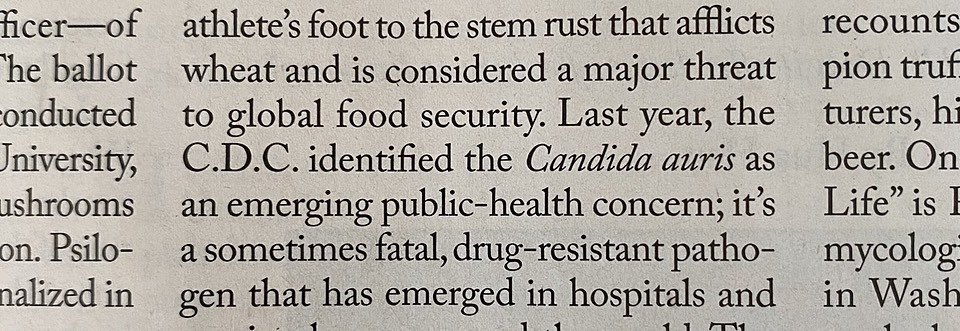I’ve ranted many times here about the wanton misuse of biological scientific names. Those are the things, generally in italics, that name a species in such a way that we can all agree what it is we are talking about; Rudbeckia hirta, for example, rather than black-eyed Susan.
People are forever mistakenly referring to the Rudbeckia hirta, which is just plain wrong. A scientific name is a strong proper name, which never takes a definite article.1
So it was with amazement that I saw The New Yorker, of all places, famed as it is for the breadth and depth of its fact checking and grammarian exactitude, refer to “the Candida auris” on page 66 of the 18 May, 2020 issue.

This was in a review of the Merlin Sheldrake’s2 book on fungi, which sounds like it might well be worth a read, as an old fan of Paul Stamets and fungi in general.
Webmentions
Webmentions
Webmentions allow conversations across the web, based on a web standard. They are a powerful building block for the decentralized social web.
If you write something on your own site that links to this post, you can send me a Webmention by putting your post's URL in here:
Comments